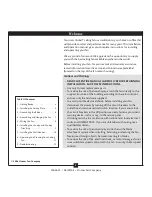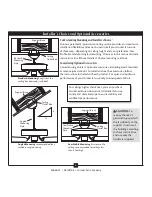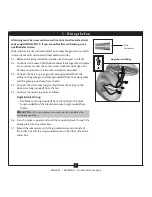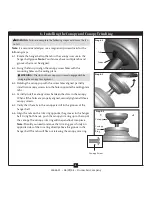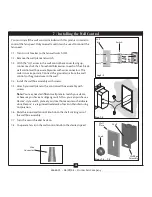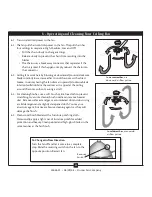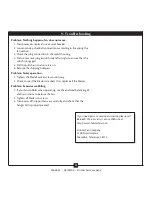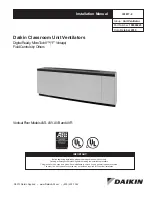
11
42664-01 • 06/09/08 • Hunter Fan Company
In warm weather
, use
downward air flow pattern
In cold weather
, use upward
air flow pattern
8-1. Turn on electrical power to the fan.
8-2. The fan pull chain controls power to the fan. The pull chain has
four settings in sequence: High, Medium, Low and Off.
• Pull the chain slowly to change settings.
• Release slowly to prevent the chain from recoiling into the
blades.
• The chain uses a breakaway connector that separates if the
chain is jerked. If this happens, simply reinsert the chain into
the connector.
8-3. Ceiling fans work best by blowing air downward (counterclockwise
blade rotation) in warm weather to cool the room with a direct
breeze. In winter, having the fan draw air upward (clockwise blade
rotation) will distribute the warmer air trapped at the ceiling
around the room without causing a draft.
8-4. For cleaning finishes, use a soft brush or lint-free cloth to prevent
scratching. A vacuum cleaner brush nozzle can remove heavier
dust. Remove surface smudges or accumulated dirt and dust using
a mild detergent and a slightly dampened cloth. You may use
an artistic agent, but never abrasive cleaning agents as they will
damage the finish.
8-5. Clean wood finish blades with a furniture polishing cloth.
Occasionally, apply a light coat of furniture polish for added
protection and beauty. Clean painted and high-gloss blades in the
same manner as the fan finish.
To Change Airflow Direction
Turn the fan off and let it come to a complete
stop. Slide the reversing switch on the fan to the
opposite position. Restart fan.
Reversing
Switch
8 • Operating and Cleaning Your Ceiling Fan


